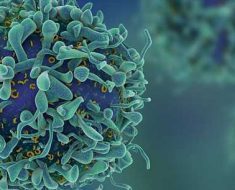
- Between 14 and 15% of people around the world have migraine headaches.
- People who have migraine are at an increased risk for a variety of conditions, including cardiovascular disease.
- Researchers in Denmark report that while both men and women who experience migraine are at an increased risk of having an ischemic stroke, only women may also have an additional increased risk of having a heart attack or hemorrhagic stroke.
Between 14 and 15% of the world’s population have migraine — a condition causing chronic headaches with severe symptoms.
People who have migraine headaches are more likely to have a variety of other conditions, including depression, epilepsy, fibromyalgia, irritable bowel syndrome (IBS), hearing difficulties, asthma, and sleeping problems.
Additionally, previous research shows people who have migraine are also at an increased risk for cardiovascular diseases such as heart disease, stroke, and high blood pressure.
Now, researchers from Aarhus University in Denmark are reporting that while both men and women who experience migraine headaches are at an increased risk of having an ischemic stroke, only women may also have an additional increased risk of having a heart attack or hemorrhagic stroke.
Their study was recently published in the journal PLOS Medicine.
Ischemic vs. hemorrhagic stroke
A stroke occurs when something causes blood to stop flowing to the brain, cutting off its oxygen supply.
There are three main types of strokes:
- Ischemic stroke, which is the most common type of stroke, occurs when arteries are blocked — such as by cholesterol build-up or a blood clot — which stops blood from traveling to the brain.
- Hemorrhagic stroke is caused by a blood vessel rupturing in the brain with the blood that escapes putting pressure on the surrounding brain tissue, leading to cell death.
- Transient ischemic attack is where blood flow to the brain halts for a brief period of time and then resumes normally on its own.
Symptoms of both ischemic and hemorrhagic strokes are similar and may include:
- drooping face
- numbness or weakness in the arms, legs, and/or face, especially if it occurs on only one side of the body
- confusion
- trouble speaking or understanding speech
- vision issues
- loss of balance and/or coordination
- dizziness
- severe headache
These symptoms can either come on suddenly or occur a few days before the stroke happens.
A stroke is a medical emergency. If someone recognizes any signs of a stroke, they should immediately call 911 for medical assistance.
Although a stroke can be treated, the quicker a person receives medical attention the better their outcome.
Migraine and stroke
According to Dr. Cecilia Hvitfeldt Fuglsang, a registrar in the Department of Clinical Medicine at the Department of Clinical Epidemiology at Aarhus University and a lead author of the study, while there have been studies examining the impact of migraine on ischemic stroke risk, they suggest that the impact mainly or perhaps exclusively existed among young women and not young men.
“We wanted to see whether our findings would be the same and whether this sex difference also existed for risk of hemorrhagic stroke and heart attack,” she told Medical News Today.
For this study, Fuglsang and her team conducted a nationwide study of Danish medical records of people between the ages of 18 and 60 that had been collected from 1996 to 2018. Scientists identified both men and women who had migraine headaches based on their prescription drug records.
Researchers then compared the risk of heart attack, ischemic stroke, and hemorrhagic stroke before the age of 60 to the risks people in the general population without migraine have.
Upon analysis, researchers found both men and women who have migraine had a similarly increased risk of ischemic stroke.
However, the research revealed that women who have migraine headaches have a slightly higher risk of heart attack and hemorrhagic stroke, compared to men who have migraine as well as the general population.
“I expected that we would find an association between migraine and these events, but I was unsure of whether the association was specific to women,” Fuglsang said. “For heart attacks, we cannot rule out that the association exists for males as well. The tricky part is that migraine is less common in men and this naturally affects the power of the results regarding the males.”
New awareness for doctors
For women who have migraine and may be concerned about these findings, Fuglsang said we need to remember that the overall risks are low.
“That being said, I would say that doctors should be aware of the association between migraine and cardiovascular risk — for both men and women,” she said. “How we may modify this risk is less clear. The main thing that can be done now is to optimize the treatment of any other cardiovascular risk factors and for instance, encourage smoking cessation.”
As for the next steps in this research, Fuglsang said she hopes to examine the prognosis among people with migraine who have one of these events.
“Also, it would be interesting to look at how we may diminish the risk of cardiovascular disease among persons with migraine,” she added. “This would, however, require a different type of data and study setup than what I am currently working with.”
Keeping risks controlled
Medical News Today also spoke with Dr. José Morales, a vascular neurologist and neurointerventional surgeon at Pacific Neuroscience Institute in California, about this study.
Morales said he was not surprised by these findings as “the prior studies showing that an association between females and ischemic stroke is somewhat an established finding and generally accepted among neurologists and vascular neurologists who have been following studies in this field.”
“As you gather data on population-based registries, you’re always trying to correct for these confounding biases that might arise because of this disproportionate prevalence among different genders,” Morales added. “It is interesting to finally suss out that maybe the risk is not so gender specific. And I think it makes good sense with what the underlying putative mechanisms are for stroke and people with migraine with aura. That includes vasospasm and hypercoagulability among other sorts of vascular etiological causes, for why migraine might be predisposed to increased stroke risk.”
For those who may be concerned about their stroke risk, Morales said more information has to be gathered on a person’s individual risk.
“I wouldn’t necessarily use (the study) as an opportunity to panic as much as just to make sure that you’re looped in with the right doctors and that you’ve got a lot of these other cardiovascular and cerebrovascular risks well controlled because they do sort of feed into each other,” he said.
Source: Read Full Article





